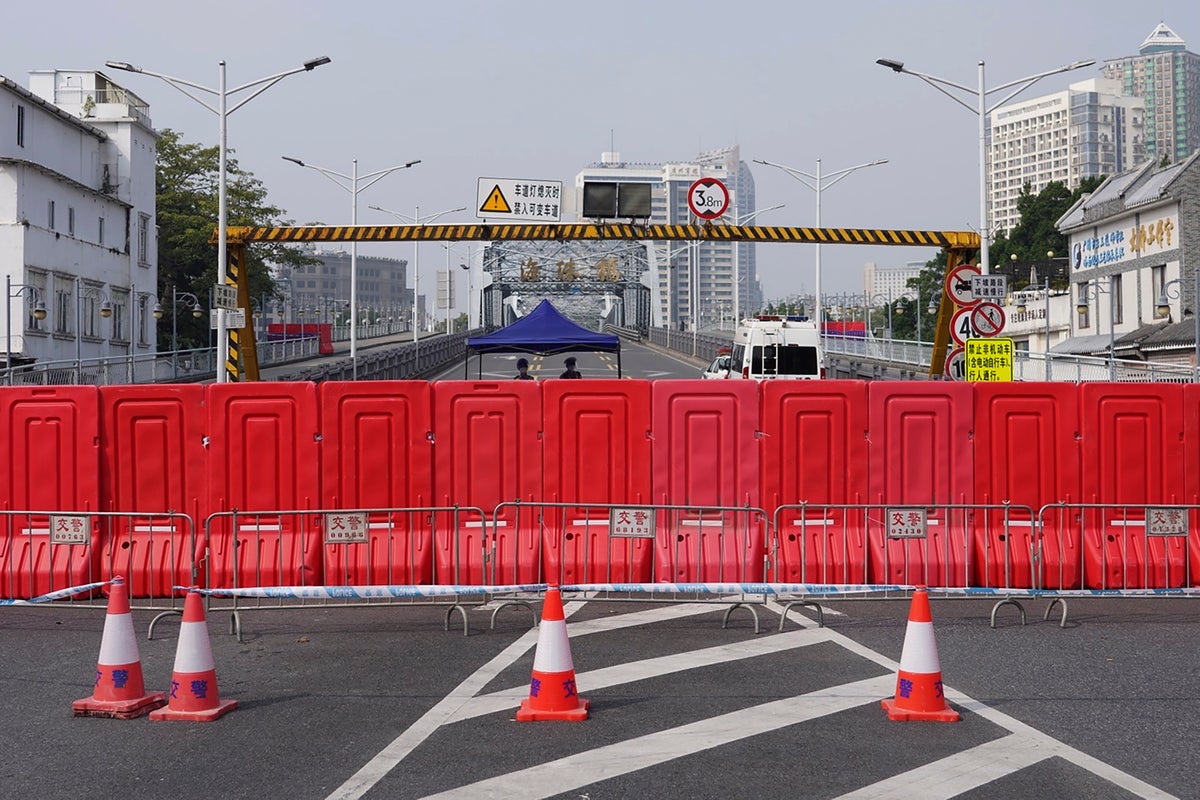
Everyone in a district of 1.8 million people in China’s southern metropolis of Guangzhou was ordered to stay home Saturday to undergo virus testing and a major city in the southwest closed schools as another rise in infections was reported.
Nationwide, a total of 11,773 infections were found over the past 24 hours, including 10,351 in people with no symptoms, the National Health Commission announced. China’s numbers are low, but the increase over the past week is a challenge to a “zero-COVID” strategy that aims to isolate every infected person.
The quarantine for travelers arriving in China was shortened to five days from seven as part of changes in anti-virus controls announced Friday to reduce their cost and disruption. But the ruling Communist Party said it would stick to “zero COVID” even as other countries ease travel and other restrictions and try to shift to a long-term strategy of living with the virus.
A total of 3,775 infections were found in Guangzhou, a city of 13 million, including 2,996 in people who showed no symptoms, according to the NHC. That was an increase from Friday’s total of 3,030, including 2,461 people without symptoms.
People in the Guangzhou's Haizhu district were ordered to stay home Saturday while testing was carried out, the district government announced on its social media account. One member of each household was allowed out to buy food.
Guangzhou, 120 kilometers (75 miles) north of Hong Kong, has shut down schools and bus and subway service across much of the city as case numbers rise.
Flights from Guangzhou to the Chinese capital, Beijing, and other major cities have been canceled.
Nationwide, people who want to enter supermarkets, office buildings and other public buildings are required to show negative results of a virus test taken as often as once a day. That allows authorities to spot infections in people with no symptoms.
In the southwest, the industrial city of Chongqing closed schools in its Beibei district, which has 840,000 people. Residents were barred from leaving a series of apartment compounds in its Yubei district but the city gave no indication how many were affected.
The ruling party earlier this year shifted to isolating buildings or neighborhoods where infections are found instead of its previous approach of suspending access to cities following complaints that was too costly. But in outbreaks, such restrictions still can extend to areas with millions of inhabitants.
Public frustration and complaints that residents sometimes are left without access to food or medicine have boiled over into protests and clashes with local officials in some areas.
Elsewhere, mass testing also was being carried out Saturday in eight districts with a total of 6.6 million people in the central city of Zhengzhou.
Access to an industrial zone of Zhengzhou that is home to the world’s biggest iPhone factory was suspended last week following outbreaks. Apple Inc. warned deliveries of its new iPhone 14 model would be delayed.
Despite efforts to ease damage to the world’s second-largest economy, forecasters say business and consumer activity is weakening after growth rebounded to 3.9% over a year earlier in the three months ending in September from the first half’s 2.2%.
Economists have cut their forecast of China’s annual economic growth to as low as 3%, which would be among the lowest in decades.
President Xi Jinping’s government has refused to import foreign vaccines and defied requests to release more information about the source of the virus, which was first detected in the central city of Wuhan in late 2019.
Economists and public health experts say “zero COVID” might stay in place for as much as another year. They say millions of elderly people have to be vaccinated before the ruling party can consider lifting controls that keep most foreign visitors out of China.






